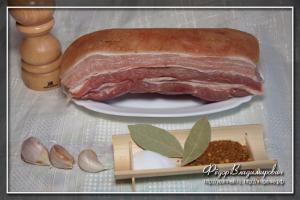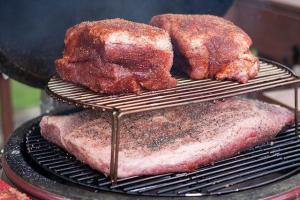Benches, tables, beds and other furniture made from logs look much more appropriate near a dacha or suburban house than the same plastic counterparts. This is an environmentally friendly material that emphasizes the originality of the design and the good taste of the owners. In addition, you can even create them yourself, finding a kind of outlet in such a useful hobby.
Logs are an environmentally friendly material, so they make excellent garden furniture.
Various furniture made from logs
To create such furniture, it is not necessary to immediately buy material. Sometimes it is enough to look around and select drying trees on the site that cannot be rejuvenated by cutting branches and fertilizing. When we cut them down, we get a mass of wood that can be used to create, for example, a bench from logs.
For this, a base is selected that will be processed. Having marked the cut points with an electric saw, we cut the log in half and construct a back and seat from both parts. To fasten them together, strong branches cleared of bark are used, in which holes are drilled with a drill and a steel rod is inserted.

To prevent the metal from moving freely in the resulting space and the bench from becoming loose, the most common PVA glue is used to work with wood. It needs to be poured into the recess and a rod inserted there, allowing the structure to dry. In order for the bench to serve longer, before assembly, all parts must be thoroughly sanded, all damage must be removed, and cracks and cavities must be filled with a special grout.
If the owner does not have steel rods at his disposal, and it is difficult to purchase them, you can use ordinary nails, removing their heads. A prerequisite when creating furniture: treatment of all parts with impregnation, which subsequently eliminates rotting, mold formation, and colonization of bug colonies. After assembly, when the furniture is already firmly installed, the surfaces are covered with layers of varnish, which will give a well-groomed appearance and protect from bad weather.
The back with which the bench is equipped can also be decorated using not boards, but 2-3 forged intricately curved rods, which are not so difficult or expensive to buy. Additions made from wicker, which is very easy to work with, will look no less impressive. It is durable and can be used to create high back or armrests if the log is not large enough.

If the owner has coniferous logs at his disposal, he needs to take care to get rid of the resin, which, especially on hot days, will actively release, staining clothes.
To neutralize resins, several compositions are used to choose from:
- acetone and water in a ratio of 4 to 1;
- a solution of acetone and caustic soda in a ratio of 20 to 4;
- potash and soda ash in a ratio of 5 to 6.
The mixture is thoroughly rubbed into the bark-free wood several times and washed off. After this, the material is dried naturally or using a hair dryer.
Unique log tables
To complement the benches, tables are also created from logs, which can be simple or more complex depending on the amount of material, free time and skill of the owner. The simplest option for decorating a garden is a wide leg from a block of wood cut to the required height. Since the bottom of the table will be in very close contact with the ground, improvised stands are created from wood and pieces of plastic.

Such furniture can be created in a few hours if you first take care of sanding and impregnation. It is important that all cuts are made smoothly, without distortions - this way the table will stand very firmly. For many, the problem is not the construction of the table itself, but how to choose a tabletop.
After all, she needs enough sleep large diameter. And here you can dream up using big piece durable glass, the back of an old one cut to specified sizes wooden bed, a wooden wheel covered with glass.
If there are enough logs, but they small size, a table made of logs is built with your own hands according to the principle of a log house. For the tabletop, several pieces are sawn in half and fixed cross bars. Benches are also being built for them, more reminiscent of original chairs than usual garden furniture.
You can decorate the space, complementing the ensemble, with logs installed nearby.

Before you can make a beautiful table for your garden out of logs, you will need to first complete a drawing that will indicate the dimensions and details of the table.
Long logs are placed horizontally, and short logs (30-40 cm long) are placed vertically. You can hollow out holes in the middle to fit the size of flowerpots, round or elongated. It is important to plant flowers in a flowerpot, since simply pouring clay and systematically watering the plants will lead to rotting of the wood. To avoid working too long hand tools, on initial stages It is appropriate to use a power saw, and then only a chisel or other tools.
An oblong table with log legs is even easier to create. But before that you need to make a drawing indicating the dimensions of the parts. As crossbars that give stability to the table, you can nail not just wooden planks, but cleaned, processed curly tree branches. With such lacquered furniture the garden will become very cozy and even unique. Such a table and benches are installed not only under trees, but also in gazebos and on open terraces.
Outdoors on sunny days
With imagination and desire, you can create beautiful things on your own that make family holiday even more enjoyable. In addition to a bench and table, you can build a durable swing and even a hammock. As blanks for the swing, you need to choose 6 pieces of strong logs, the height of which exceeds 2.5 meters. The radius of the logs should be at least 5-6 centimeters. The structure must support the weight of adults who will definitely try to swing.
For supports, three pieces of logs are used on both sides, arranged in a triangle, the upper part of which is fixed with self-tapping screws. The length of the vertical log and crossbars is determined by the width of the bench, which, depending on the design. can accommodate 1-3 people.

In order not to disturb the unified composition, but also not to make the structure too heavy, several carefully polished cuts are used for the back and seat, connected in the same way as a regular bench. In conclusion, all that remains is to decide on what the bench will be suspended on: on a metal chain or on a strong, thick rope.
Garden furniture can be supplemented with an original hammock, which will require:
- 2 small logs 1.2 m long and 3-5 cm in radius;
- a piece of durable fabric 1.5 m by 2.5 m;
- strong rope or colored clothesline;
- round steel rivets.
First of all, the wood is processed and thoroughly sanded. Multiple holes are drilled into it at a distance of 2.5 cm through holes. Then it needs to be treated with an antiseptic, varnished and left until completely dry. Next, work begins with the material, which, if measured correctly, does not need to be sheathed sewing machine. It is enough to fold the edges three times and often stuff steel rivets, which is original and quite fast. A rope is pulled through the transverse holes and the drilled dry crossbar, from the free ends of which very strong loops are created on both sides of the hammock. You can diversify the design by creating a kind of fringe from the remains of a rope tied in a knot in the free holes with rivets on the sides.
A beautiful and very practical hammock can be hung from the beams of the gazebo, between trees, or from log pegs buried in the ground for stability. In this case, part of the logs, buried in the ground to the maximum depth, is protected from possible decay by resin or several layers of roofing material. A small stand for a flowerpot, also made from a cut log, will help complement the decoration.
All photos from the article

It does not happen in nature that all the material, centimeter by centimeter, is spent on construction without leaving a trace. There are always scraps left, sometimes whole beams or logs, which are a pity to burn in ovens. It is better to find a use for them in the form of homemade country or outdoor furniture.
The most popular, most useful piece of furniture is the table. Any material can be suitable for its manufacture: boards, slabs and even logs. Today we use scraps of logs in construction.
From design to execution

Simple design - uncomplicated execution.
Let's start with the good news. You don’t particularly need drawings of log tables; the reason for this non-trivial approach to furniture construction lies precisely in the material. The instructions are very simple.
Logs can be used:
- For table legs. You can easily connect them together by placing them at the corners of the perimeter of a box made of boards. But more on that later.
- For making side posts. The technology used here is to set logs to build walls. Often, in this way, combined tables and benches are prepared from logs.
- For forming tabletops. This is a whole layer of material that involves the use of various techniques and methods, fastening methods and much more.
But for now, let’s look at the above; all other methods of use depend only on your imagination.
The simpler the more economical

The photo shows a vivid example of the skillful use of wood
Let's look at the simplest table that even a schoolchild can make with a saw, hammer and nails on hand. This is an option in which logs are used as legs.
To make it you will need scraps - in the literal sense of the word.
- First of all, we prepare the wooden perimeter. For this purpose, you need to connect four boards. As a result of this articulation, a rectangular structure is formed. There are many options for attaching boards. If you want, connect them using screws or nails, if you want, do it finger joint, or if you want, use metal corners;
- Then fix four one-size logs in the corners of the formed perimeter.
F Fixing logs is possible in several ways:
- The first and easiest is to nail or fix with self-tapping screws;
- The second is to make recesses in the wood so that the log is inserted flush into the corner, forming a single ensemble. This technique is more complex, as it requires either skill or special equipment.
- The final stage is installing the countertop. Quality: MDF, chipboard, OSB. The tabletop can be assembled from scraps of boards that were used for sheathing. A tabletop can even be made from logs if you cut them into at least two parts on a circular saw.

Advice! It is clear that such a table has a pronounced street character, so it is better to replace the tiled material with a stacked table top made of boards. And don’t forget to cover the boards with an antiseptic. And ideally with stain and varnish.
Table like a log house
Became very popular in Lately typesetting table made of rounded logs. At the same time, the technology for its manufacture is no different from building a house. The design stages are absolutely identical, except that there is no need to install insulation between the logs.
To build this structure you need:
- Decide on the type of table. Without even going into details, I would like to note that there are a lot of options for setting tables. There can be mini huts, side posts in the shape of the letter “X”, and modern assemblies with various romantic names. To move away from fantasy and tune into a more practical mood, let's approach this issue in this way:
- Do you want to build a base in the form of a mini house, where instead entrance doors or windows, it will be possible to place boxes where in the summer you can leave a small garden or carpentry tool? Then you need to remember the technology of building a house.

Note! The joining of logs in the corners is carried out similarly to the joining of logs during the construction of a house, using the “bowl” method.
- X-shaped bases are easier to assemble, and the need for previous joining may arise once to give the structure stability;
- Various modern designs involve not only the use of logs, but also tree branches of non-standard length and diameter.
A few words about joints.
Docking logs together can be done in three ways:
- Using wooden pegs;
- Using reinforcement rods;
- Using self-tapping screws of the required length.
If everything is clear with the screws, then the pegs require some explanation. In the case of them, the bottom log is drilled halfway through, and the rest through. The rods are inserted into the holes in such a way that they slightly expand the prepared hole, the principle of a chop or a cork in a bottle.
To organize a recreation area in the garden, at the dacha, in the courtyard of a cafe, kindergarten You can make furniture with your own hands. Garden furniture made of wood looks the most advantageous. Every table, chair, bench, swing, armchair can become a real work of art in the hands of a person striving for beauty. To make such furniture you do not need special knowledge carpentry and some expensive tools.
Original paths, lush flower beds will always be a source of pride summer cottage.
It is enough just to stock up on materials in the form of logs, boards, stumps. Garden furniture made from logs is not only environmentally friendly, but also always evokes a lot of positive emotions in those who see and use it. In addition, it is very practical and not as expensive as, for example, wrought iron furniture.
What materials to use

Bird feeder diagram.
Summer cottages often require owners to make new decisions in organizing a vacation spot. This solution could be to use, for example, cut down trees, vines, beams, logs lying around on the farm to make various furniture for your dacha.
The following tools will help you make furniture from logs with your own hands:
- chainsaw;
- jigsaw;
- chisel;
- bit;
- rasp;
- sandpaper;
- a clean brush for applying the resin solution;
- nails (don’t forget to “bite off” the heads of them);
- construction hairdryer

Sculpture diagram for the garden.
In order to make furniture from logs with your own hands, you will need the following materials:
- logs;
- hemp;
- vine;
- boards;
- means for impregnating wood against rotting (antiseptic);
- wood paints;
- figured tree branches of different thicknesses;
- acetone;
- water.
Return to contents
The simplest options for making furniture from logs

Garden furniture diagram.
If you cut down an adult tree on the territory of your summer cottage, do not rush to cut the log for firewood. It will make wonderful garden furniture. You can get a chic table, chairs with backs or stools, an armchair, a bench, a bench. Make country furniture from a log with your own hands is very simple. The simplest option is to make a bench. The log should be large enough in diameter so that when cut into two parts, it can create a seat and a backrest. You can place the bench on stumps, having first dug them into the ground. Another good and often used option is four logs. You need to use a chainsaw to cut out holes in each one. Place two logs on top of each other, and on top - half of the third, intended for the seat. The notch will give stability to the bench, it will not roll down.
You can fasten the backrest to the seat with boards or logs of smaller diameter.
Using the same scheme, you can make a chair with a back for your dacha. Only then should you take a shorter log. On the sides, for convenience, you can round it.

Diagram of the swing structure.
If you are using a log from coniferous tree, then additional processing will be required. Other tree species do not need it. In order for you to have a bench in your dacha that you won’t be afraid to sit on, the log must be rid of tar. Mix acetone with water in a ratio of 4 to 1, apply it to the wood with a clean brush, and wait until it dries completely. Any unabsorbed solution must be washed off and dried with a hairdryer.
To make a table from a log, you will need a stump from a fairly mature tree. The older the tree was, the more interesting and noble the table will look. It’s good if this stump is located in the recreation area of your dacha. A tabletop made of polished boards is nailed to this stump. It can be made in different shapes and sizes (depending on your taste preferences).
Around this table you can make hemp chairs from the remaining material. They are perfect for the garden. To do this, you need to cut the log into equal parts. But the length of one block should be such that it would be comfortable to sit on this chair later. Place the pads around the table, compacting them well into the ground. Make a hole in the center of the table to insert an umbrella, which will save you from the sweltering heat.
Garden furniture made from logs has become so widespread due to the huge variety of options and the ease of its manufacture. Your dacha, for example, will become fabulous if you make a chair from an old tree that you were going to cut down. To do this, you need to cut a hole in the stump with a chainsaw, remove the bark, sand the surface and cover the product with an antiseptic and varnish.
A bench can be made from a log in the following way: a third of the thickness of the log must be cut off, but the edges should not be touched. They will serve as armrests. You can install such a bench on legs in the form of logs. Great option for the dacha.
Garden furniture is more interesting the more unusually you approach its production. Any dacha keeps the secrets of the past. It’s unlikely that there won’t be an old wooden chair with a decorative back in the household. Found the right one? Take it apart. Attach the backs and legs of the chair to a small diameter log using nails.
You will get a comfortable and functional chair back. A great design move is to wrap a rope around a log. It will look very original. You can also invite guests to your dacha.
After the construction of a log house, the remains of logs, logs, and boards are often left behind. Moreover, there is a shortage of substandard building materials after clearing the site - cut down trees, stumps, snags, etc. All this can be usefully used to make nice and even designer garden furniture - from a simple bench to entire sets of tables, benches and chairs.
From this article you will learn how to make from, literally, pasture lumber:
- several options for simple but stylish shops;
- two options for benches;
- stool;
- table.
In addition, you will receive plenty of food for the development of your own design fantasies, the implementation of which depends only on your skills in handling tools and the availability of free time.
All garden furniture products that will be discussed are made in a “wild” or rustic style, or in country style. They are perfect for furnishing a relaxation area outside the home. And if you have “”, then even more so, nothing is better to tastefully “furnish” the area around the house for summer holiday outdoors or gatherings with barbecue, you can’t imagine.
To immediately understand what we are talking about, here it is:
... and about this:

Such a product will require more time due to the larger number of parts and the need to fasten them together.
If you don’t mind, you can leave the log bench without protective treatment. But if durability is important to you, then the products should be protected with antiseptic compounds, treated with stain, or varnished.
Tools for making garden furniture
The set is, in general, standard. If you have a workshop, then most likely you have everything you need there. You may need a hammer, mallet, screwdriver (drill), grinder or grinder, axe, plane, saw...
In order to build a bench or other “wild style” furniture quickly and without extra effort, it is advisable to have a chainsaw or electric saw at your disposal. This will make your work a lot easier! Because the main idea in wild furniture projects is the use of half-logs as structural elements.
Of course, it is more convenient to cut whole logs and blocks with a chainsaw. But if you don’t have one, this doesn’t mean that you don’t have the technical ability to build a bench or table yourself. You just have to split the logs with a cleaver and wedges.
In fact, it is possible and not as difficult as it seems. Here is a video on this topic:
In this video they use a cleaver - an ax for chopping wood. Its difference from a carpenter's ax is that the working, piercing part has a noticeable expansion, and the sharpening angle of the blade is wider. You can also use an axe, you just have to drive in the wedges earlier.

With this method of halving a log, it is important that the log splits along the plane of impact and that the crack does not go sideways. Much depends on the quality of the log. Firstly, it must be dry. In principle, it is advisable to work with dried lumber when building garden furniture, because raw timber can become deformed during the drying process, crack, and your bench, bench or table will become uncomfortable, unstable, or simply lose its aesthetic appearance.
Secondly, if you are splitting a log with a cleaver to obtain smooth materials suitable for building a bench, then it should not be too twisted. That is, the fibers must run more or less evenly, because the crack will go along them. Minor irregularities and deformations along the split surface can be removed with a plane and grinding. In addition, “wild” furniture does not have to be perfectly flat!
The nuances of using a chainsaw when building garden furniture with your own hands
Here is a wonderful example of a garden bench that is as designer and unique as it is simple:

But the simplicity is only apparent. Indeed, its design is elementary - just one log, no other parts or fasteners. The entire structure - seat, back - was cut out with a chainsaw. However, to cut such a shaped product, you need to have excellent command of a chainsaw, a feel for the tool and the material. Therefore, this bench is not so simple.
To evenly halve a log, you also need to have some skill. A couple of tips to make your work easier:
- make markings not only at the end, but also along the log;
- if the log is debarked, draw two lines - a strip along which the cut will go, 1 cm thick - this is the approximate thickness that the saw will “eat”;
- if you want to leave the bark and it is inconvenient to draw on a log, then you can stretch a cord from end to end and carefully saw along it;
- secure the log so that it does not “walk” due to the vibration of the saw, support it with wedges, bars, etc.
To decorate a bench or bench, you can lightly run a saw chain along the flat part of the half-logs - the seat and back - and make a few transverse scratches and gouges to age the wood and give the shape a natural look. When sanded, the chipped areas will be smoothed out and will not interfere with use, but the appearance of the bench or bench will become more interesting.
To age wood, firing and scratching with a hard steel brush are also used.
DIY wild style bench
The simplest piece of garden furniture that you can make with your own hands is a bench. If you have a thick enough log, you can cut it out of a solid mass, and you will get something like this:

We cut it out with a chainsaw and polish it. We burn it, cover it with varnish, stain – details to taste. This shop looks quite original, despite the simplicity of the design.
If there is no such thick log, then here is the second option:

It's intuitive how this is done, right? In general, all furniture of this type is folded, just like a log house - the upper elements are placed in cut-out grooves. In this case, the connection is “”, but it is not necessary to cut out an even “lunar” groove; it is enough to cut out a triangular segment so that the main half-log sits firmly in the block legs. It’s easy to cut out such grooves with an ax - fine workmanship not required.
The log for the seat does not have to be smooth and without knots; it can also be crooked. The same is true in the case of making a bench. The natural curvature of the material, on the contrary, will add spectacularity to the product - brutality and stylish “wildness”.

A simple “wild” bench without a single nail
How to make a bench is already clear. To get a bench, you only need to attach the backrest. It can be attached without single nail, self-tapping screw, etc.
To do this, take two bars of triangular or trapezoidal cross-section. We get it from one, sawing it in the middle. A triangular section is needed to make a connection between the “” bars and the seat and backrest.

In the half-logs for the seat and back, triangular (trapezoidal) grooves for supports are cut out so that the wide part is inside the half-logs. Then all the elements are connected in these grooves. In the video you will see that it is easier than it sounds in words:
But this is more difficult than it looks. The main difficulty is cutting out the grooves the desired shape under the right angle in the round surface of half-logs. Without certain dexterity and experience in working with a chainsaw, this is not easy.
There is a simpler option - to do without " swallowtail", use self-tapping screws or nails to attach the backrest supports to the bench. The supports are attached to chocks, which serve as legs; they can also be attached additionally to the seat mass. The back can be secured in the same way by cutting out moon grooves in the supports themselves, if they are thick enough. We get approximately the following:

To make the benches and benches described above, you need initial logs from approximately 35 cm in diameter (if we take the same ones). This is dictated by the comfortable parameters of the bench or bench itself. Its height is 40-50 cm. The height of the seat plane is about 1.5 times the diameter of the log. The final calculation depends on the depth of the groove, but it is not necessary to cut it deep.
Another important note:
For two benches, it is advisable to cut the log in half, but for a bench, it is better to move the cutting plane away from the diameter plane, so that the beam for the back is smaller than for the seat. Firstly, your bench will be 5-10 cm higher, which is important if the log is not thick enough. Secondly, do not forget about the center of gravity of the bench.
If the half-log for the back is as massive as the seat, and the back is sloped, then the structure may be unstable. This problem can be solved if you rigidly attach the seat to the lower supports, but you will also be sitting on this bench! And you'll want to sit back!
To prevent the center of gravity from shifting so that the bench will tip over or wobble, the top of the backrest should not extend beyond the vertical axis passing through the extreme points of the lower supports and legs. It is better if the legs protrude further than the back of the bench.

Another significant parameter. There are various original design benches, chairs, etc., but for a standard bench or chair, the backrest slope is within 30° from the vertical axis.
Another bench made of logs that is easy to make with your own hands
This option is suitable if you have logs of small diameters. To make it clear, it’s better to see it once:


Everything here is also clear from the picture. The logs are connected - articulated into longitudinal grooves. Half logs - for the back and seat. For the backrest supports, grooves are cut out in the logs of the “legs”, but, in principle, they can be secured with screws or nails. The bottom bar is necessary for the rigidity of the supports.
What's the main thing here? The main thing is to fasten the supporting logs, “legs”. They can be fastened together:
- – metal or wood; as such, reinforcement can be used;
- nails;
- screws, self-tapping screws.
The fastening elements should be staggered between different logs. When attaching the supports for the backrest to the body of the main lower supports, you need to make sure that the fastening elements do not intersect inside the solid wood.

Important: Do not screw in a screw or drive a nail from scratch! This way you can split the log, especially if it is small in diameter. Pre-drill the holes with a drill equipped with a long drill bit!
DIY log table
For example, in this video you will see in two minutes how a master will make a simple set of a bench and a table in a “wild” style without a single nail:
By the way, to strengthen the structure, no one bothers to use glue, nails, etc.
The tabletop can also be installed on a wide stump, which remains from a cut down tree. In general, if there are stumps left on your site, take a closer look at them before uprooting them. Perhaps, if they are positioned well, it will be possible to install a bench on them, but certainly – you can put a table! In this case, it is better to knock down the tabletop from rough boards, or use a homogeneous array.
If you make a table entirely from logs, then the principle is the same as in the construction of benches. The structure is assembled in the same way as a log house - the elements are placed in grooves. If it is necessary to increase rigidity, fasteners and glue are used.
The following image shows a one-piece structure that combines both a table and benches. Doing this is technically no more difficult than a separate bench. The only difference is that you need to tinker with calculations and drawings; you can’t do it by eye.

A simple way to make a “wild” stool from thick wood
... which you won’t be ashamed to put in your home. See how easy it is:
Please note that it is not at all necessary to master a chainsaw, since the scale of the workspace allows you to correct the unevenness of the first cut.
Such a stool will fit into the interior, as well as a table made of logs, especially in a log house in the “wild style”.
Another method of making a stool, where you don’t even need to cut anything out:
A thick enough piece of wood can make an excellent chair. If you burn it, sand it and varnish it, you get an exclusive product that would be a pity to take outside:
For inspiration
Any material can be used to make garden furniture if you get creative. Any snag, branch, or stump. Below are photos that confirm this.





The gazebo is a place for relaxation and feasts. Purchasing an outdoor table made of plastic is not the best option. Always look dignified and thorough wooden crafts. Most the best option- this is a table made of logs, let's talk about it simple version and details of its creation.
Table drawing
Before you begin, it is important to correlate the parameters of the gazebo with the dimensions of the future furniture. It makes more sense to use a preliminary drawing with all parts marked. It will be more convenient to have a three-dimensional image of all the details. Be sure to start by painting the finished table with the dimensions of the main parts. Be sure to indicate the thickness at the joints.
Preparation of logs
To implement the idea, you will need to calculate the consumption of logs. It is necessary to take into account the legs and all additional supports. If the design idea implies a simple style, then an unhewn log is used. For more civilized options, polishing with any accessible ways, including an ax and a plane.In any case, the surface should be free of bark and leveled. The bark can be removed with a chisel and hammer, or an ax. For the tabletop you will need not round pieces, but logs sawn lengthwise. If you can’t do this on your own, use the services of a sawmill or try to cut it with a chainsaw.

To eliminate complications, you can omit the creation of longitudinal grooves for fasteners. This will reduce assembly time and save energy. If you stick to this option, you need to grind the selected part at the joints with a plane. The width of the leveled plane at the joints is made massive for reliability, at least 4 cm.
The ends of the lower and upper logs are cut at the same angle of 45 degrees; this option looks much more interesting, although you can leave a right angle. The edges should not injure, should be smooth and processed with a file.

Next, according to the drawing, holes are made for the reinforcement; its parameters can be any, so take the leftovers that you have. Select a drill according to the reinforcement and drill holes in the logs clearly at right angles. The distances must be accurately measured, this will simplify assembly, since the holes must match when applied. We eliminate all roughness at the edges, achieving a smooth grind. First we work with a plane, then with sandpaper, starting from No. 4, moving to a finer grain size.
Assembling a table from logs
We assemble the prepared logs in accordance with the drawing. We start with the bottom log/base. Reinforcement is installed in it, and all elements with drilled holes Each other.When all the parts are laid, we saw off the excess/protruding reinforcement. We use glue to strengthen it. Therefore, we disassemble the structure and reassemble it without a reinforcing pin, carefully coating the joints with glue. After this stage, carefully thread the metal reinforcement pin through the laid, glued logs. This provides stability and prevents internal wobble/wobble. Pour glue into the upper hole with the pin until the internal space is completely filled.

Top of the table
The most common method for a tabletop is to place logs sawn lengthwise on the legs. The difficulty lies only in surface treatment. You need to plan it perfectly: go through it with a plane, then apply sandpaper. Comfort when eating depends on the quality of the surface. All ribs are processed with a file, sharp corners and there should be no edges. The speed of performing such a task is solved by using a grinding attachment, then all roughness and splinters are easily removed.Remains final stage– varnish coating. The surface should be free of debris and dust. Covered at least twice. You can work with a brush, swab, or roller. After final drying, the table is ready.

There is a second option for the countertop - using chipboard. The sheet is cut in proportion to the structure and attached to the base with self-tapping screws. However, such a surface without additional support can be one meter per meter. A large area of chipboard will be deformed and “walk.” If you still find it more convenient to use this material, then long table you will have to make an additional ceiling/support from timber.
Here you can use unprocessed material, the only condition is an even beam. The quantity is selected in accordance with the dimensions of the product. By the way, reinforcement made of bars for the tabletop will add rigidity and generally make the table more stable.








